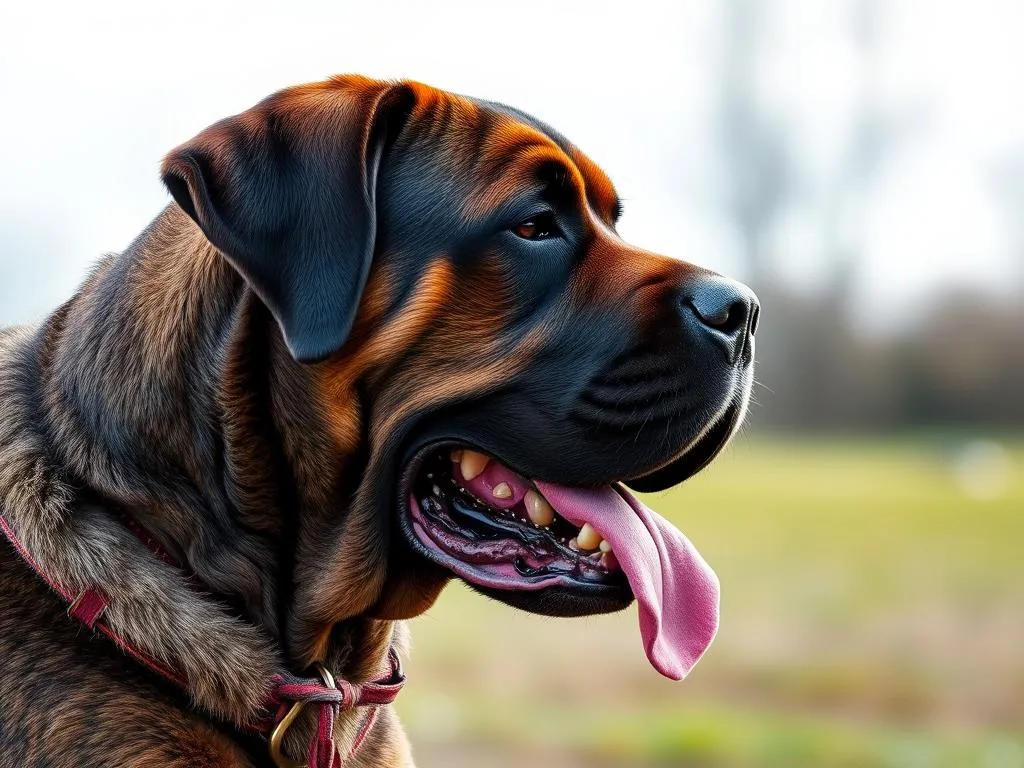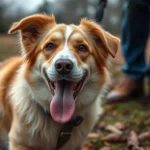
Introduction
Mastiffs are one of the largest and most impressive dog breeds, known for their massive size and gentle demeanor. These gentle giants possess a distinctive combination of strength, loyalty, and intelligence, making them both formidable guardians and loving companions. Despite their size, Mastiffs are often misunderstood; some people mistakenly believe they are aggressive or unmanageable. In reality, with proper training and socialization, they can be well-behaved and affectionate family members.
Training is crucial for Mastiffs, not only for their obedience but also for their safety and the safety of others. A well-trained Mastiff can thrive in various environments, ensuring they behave appropriately in social situations. However, training large breeds like Mastiffs presents unique challenges. Understanding how to train a Mastiff effectively will go a long way toward fostering a strong bond between you and your dog.
Understanding Your Mastiff
Mastiff Breed Characteristics
Mastiffs are known for their robust physical traits. They typically weigh between 120 to 230 pounds and stand about 27 to 32 inches tall at the shoulder. Their imposing stature is coupled with a muscular build, broad head, and short coat, which can vary in color from fawn to brindle.
In terms of temperament, Mastiffs are incredibly loyal and protective of their families. They are gentle giants who often form strong bonds with their owners. Their intelligence makes them quick learners, but they can also exhibit stubbornness, which can pose challenges in training.
Mastiff Behavior Patterns
Understanding the natural instincts of a Mastiff is essential for effective training. These dogs have innate guarding instincts, making them vigilant protectors of their territory and family. However, this can sometimes lead to territorial behavior and aggression if not properly managed. Common behavioral issues in Mastiffs include:
- Aggression: Often stemming from fear or anxiety, this can manifest toward unfamiliar people or animals.
- Stubbornness: While intelligent, Mastiffs may resist commands, especially if they don’t understand the reasoning behind them.
- Separation Anxiety: Due to their loyal nature, Mastiffs may experience distress when left alone, leading to destructive behavior.
Preparing for Training
Essential Training Supplies
Before you begin training your Mastiff, gather the necessary supplies. Essential items include:
- Leash and Collar: A sturdy leash and collar are crucial for control, especially during outdoor training sessions.
- Harness: For larger Mastiffs, a well-fitted harness can provide better control and prevent injury.
- Training Treats: Use high-value treats as rewards to motivate your Mastiff during training.
- Crate: A crate can help with house training and provide your Mastiff with a safe space.
- Training Tools: Consider using a clicker for positive reinforcement and training pads for indoor accidents.
Setting Realistic Goals
Setting achievable training goals is vital for success. Break down the training process into short-term objectives, such as teaching basic commands, and long-term goals, like mastering off-leash skills. Consistency is key; practice regularly and be patient as your Mastiff learns.
Basic Training Commands
The Sit Command
Teaching your Mastiff to sit is one of the first commands you should focus on. Here’s a step-by-step guide:
- Get your dog’s attention: Hold a treat close to your Mastiff’s nose.
- Move your hand upward: As your dog follows the treat, move your hand upward, causing their head to tilt back and their bottom to lower.
- Say “Sit”: Once their bottom hits the ground, immediately say “Sit” and give them the treat.
- Repeat: Practice this command several times in short sessions, gradually reducing the treat as your Mastiff learns.
The Stay Command
The “stay” command is crucial for your Mastiff’s safety. Here’s how to teach it:
- Start from a sitting position: With your dog in a sit, open your palm towards them and say “Stay.”
- Take a step back: If they remain in place, reward them after a few seconds.
- Gradually increase distance: Continue taking steps backward, rewarding your Mastiff for staying put.
- Practice regularly: Reinforce the command during daily routines and gradually increase distractions.
The Come Command
Teaching your Mastiff to come when called is essential for safety. To train this command:
- Use a leash: Start with your Mastiff on a leash in a quiet area.
- Say “Come”: Gently pull on the leash while saying “Come.”
- Reward: When they reach you, reward them with praise and treats.
- Practice off-leash: Once they reliably come on a leash, practice in a secure area without the leash.
Other Essential Commands
In addition to “sit,” “stay,” and “come,” you should also teach your Mastiff commands like “down,” “leave it,” and “heel.” Regular practice of all commands helps reinforce good behavior and strengthens your bond.
Advanced Training Techniques
Socialization with Other Dogs
Early socialization is vital for your Mastiff to develop good behavior around other dogs. Introduce your Mastiff to various breeds in controlled environments, starting with calm and friendly dogs. Observe their behavior and intervene if necessary to prevent aggressive reactions.
Obedience Classes
Consider enrolling your Mastiff in professional training classes. These classes offer structured learning and socialization opportunities, helping your dog interact positively with other dogs and people. When choosing a class, look for one that uses positive reinforcement techniques and has experienced trainers familiar with large breeds.
Positive Reinforcement Strategies
Positive reinforcement is one of the most effective training methods for Mastiffs. Use praise, treats, and toys as rewards for good behavior. Different types of rewards can include:
- Treats: High-value treats are great for motivation.
- Toys: Use toys as a reward during play.
- Affection: Verbal praise and petting can reinforce good behavior.
Addressing Behavioral Issues
Common Problems in Mastiffs
Mastiffs can exhibit various behavioral problems, including barking, chewing, and jumping. Understanding the underlying causes of these behaviors is crucial for effective correction.
Strategies for Correction
Identifying triggers for undesirable behaviors is essential. For instance, if your Mastiff barks excessively at strangers, work on desensitizing them by gradually exposing them to new people. If chewing is a problem, provide appropriate chew toys and redirect their attention.
Dealing with Aggression
Aggression in Mastiffs can stem from fear, lack of socialization, or territorial instincts. Understanding these causes is the first step in managing aggressive behavior. Training techniques may include:
- Desensitization: Gradually expose your Mastiff to the triggers causing aggression.
- Positive reinforcement: Reward calm behavior around triggers.
- Professional help: If aggression persists, consider seeking assistance from a certified dog trainer or behaviorist.
Maintaining Training Consistency
Daily Training Routines
Consistency is vital in training your Mastiff. Establish a daily routine that includes short training sessions. A sample daily schedule might include:
- Morning: Basic commands for 10 minutes before breakfast.
- Afternoon: A 15-minute walk focusing on loose-leash walking.
- Evening: Practice advanced commands or socialization for 10 minutes.
Keeping Training Fun
Incorporating games and activities into training makes learning enjoyable for your Mastiff. Use interactive games like fetch or hide-and-seek to reinforce commands. Keep training sessions short and engaging to maintain your dog’s interest.
Conclusion
Training a Mastiff requires understanding their unique characteristics and behavior patterns. By employing consistent training techniques, setting realistic goals, and using positive reinforcement, you can cultivate a well-behaved and happy companion. Remember that patience and persistence are crucial to your success. Celebrate small victories and enjoy the journey with your Mastiff.
FAQs
What is the best age to start training a Mastiff?
Starting training as early as possible is ideal, typically around 8 weeks old. Early socialization and basic command training can set a solid foundation.
How long does it take to train a Mastiff?
Training duration varies based on the individual dog and the complexity of the commands. Basic commands can take a few weeks, while advanced training may take several months.
Are Mastiffs good with children?
Yes, Mastiffs are typically gentle and protective around children. However, supervision is essential, especially with very young kids, due to their size.
How do I stop my Mastiff from barking?
Identify the triggers for barking and work on desensitization. Use positive reinforcement to reward quiet behavior, and provide distractions like toys to redirect their attention.
When should I seek professional help for my Mastiff?
If you encounter persistent behavioral issues or aggression that you cannot manage, consider consulting a professional dog trainer or behaviorist for guidance.









